It was Thursday evening on DePaul’s Lincoln Park campus, and students were scarce as usual, seeing as the end of the school week had arrived. But in McGowan South, room 108, a couple dozen students or so showed up to fill the first four rows of the large auditorium. Some had notebooks and pens, and at least half of them had questions for university administration.
The group had gathered for Sustained Dialogues, the second in a series of panels held by the Office of Multicultural Student Success (OMSS) and the Division of Student Affairs. The goal of the Nov. 2 event was for administration to unveil plans for the new cultural centers being installed at the university, and for students to express their concerns. The centers are officially scheduled to open early winter quarter.
The resource centers, divided into separate spaces for Black, Latinx, LGBTQA and (most reccently) Asian/Pacific Islander students, come with a recent history of tension and controversy between students and administration. The new centers take the place of DePaul’s former Center for Identity, Inclusion and Social Change, an intersectional resource center for marginalized student identities. The controversy primarily stems from the decision to close one center in order to open several separate centers for various identities, which some students worry won’t be as intersectional.
Intersectionality, rooted in the word intersection or crossing, is understood as the meeting of multiple identities in one person – for example, a Black, queer woman is affected by her identity as a woman, but also as a Black person. Intersectionality is inclusive of all identities when considering how a person is affected by discrimination. The term is considered to be coined by Kimberlé Crenshaw, a civil rights law professor at the University of California-Los Angeles. She has given a TED Talk on intersectionality.
The second installment of Sustained Dialogues drew a larger crowd than the first on Sept. 18 did, according to Kelly Garcia, a sophomore student in attendance at both events. Garcia feels this event was ultimately more successful, as more information was conveyed from administration and more questions were asked by a greater number of students. She hopes to see more in the future, as she believes the first event in the series was poorly advertised to students.
The event began with opening remarks from OMSS, followed by a delivery of updates on the new centers from OMSS Director Dr. Kimberly Everett and an introduction of coordinators for the individual centers. At the end, the room was opened for students to share their thoughts and ask any questions they might have. Students were allotted no more than two minutes to speak and were asked to remain solution-oriented, among other “rules for dialogue” broadcast on the screen throughout the evening. Students were asked to “speak the truth, as you understand it.”
Panelists included:
- Dr. Kimberly Everett, Director of the Office of Multicultural Student Success
- Patricia Santoyo-Marin, Associate Director of the Office of Multicultural Student Success
- Dr. Eugene Zdziarski, Vice President of Student Affairs
- Rico Tyler, Associate Vice President of Diversity, Empowerment, and Inclusion
- Michael Riley, Coordinator of the LGBTQA Resource Center
- Monica Ramos, Coordinator of the Latinx Cultural Center
- Cory Barnes, Coordinator of the Black Cultural Center
- Johnny LaSalle, Intersectional Programming Coordinator
While a number of students in attendance had been affiliated with the previous Center for Identity, Inclusion and Social Change in some way, there were also many students who were not. In the opening remarks, panelists asked students to raise their hands if they were at DePaul last year – about half of the students did not raise their hands, indicating they were freshmen or new to DePaul this year.
A majority of students expressed discontent over the opening date and intersectionality for the new cultural centers. As the coordinators for each center introduced themselves, they shared their own goals to work together toward an intersectional space.
Originally planned to open by the beginning of this fall quarter, construction was pushed back to mid-September after the quarter began, according to Breya Jones, previous student employee at The Center. As September came and went and fall quarter comes to a close, students continue to wonder how progress for the centers is coming along.
Construction has already begun in an area of 3rd floor O’Connell Hall now that the budget has been approved, Everett said.
Everett said they are not setting an exact date as construction processes can be fickle. “We have a schedule, but sometimes schedules deviate,” Everett said. As of now, construction is scheduled to be finished in mid-December.
In addition, OMSS will now begin the process of creating an Asian/Pacific Islander Cultural Center, as a “group of students who identify as the Asian diaspora” have made a proposal.
The cultural centers will be open 9 a.m. until 9 p.m. Monday through Thursday and 9 a.m. until 5 p.m. on Friday. In order to maintain extended hours outside of the business day as requested, the university is employing students as front desk workers throughout the various centers. First priority was given to previous employees of The Center, especially those who had trained with the social justice advocate, or SoJA, program. The SoJA positions were officially cut in August, notifying students with just less than a month before the job was scheduled to begin with fall classes.
Renderings for the space of the centers was also revealed. There will be a TV lounge, a study space and a conversation space. Furniture has been ordered, and there are plans for each center to have the same general layout but have distinct wall accents to differentiate them.
Renderings for the Office of Multicultural Student Success
Elon Sloan, DePaul senior and previous student employee in The Center, came to Sustained Dialogues with multiple questions and concerns.
Sloan doesn’t plan on being involved with or working for the new resource centers, as they feel emotionally exhausted by the extended communication and development process thus far. Rather, Sloan continues to look for community among marginalized students in other ways.
“It’s been a really difficult time to be a queer student of color because so many of the people who worked for the old center were queer students of color, trans students of color,” Sloan said. “I think right now everybody’s in this place that’s exhausted, frustrated and trying to divorce ourselves from community campus resources as much as possible, and just build community.”
While Sloan doesn’t plan on remaining too involved with the new centers, they’ve been receiving intermittent updates from OMSS and Student Affairs because of their previous affiliation with The Center. While only one university-wide email has been sent out this quarter about the centers on Sept. 13, Jones and other students previously involved with The Center say they have received other updates.
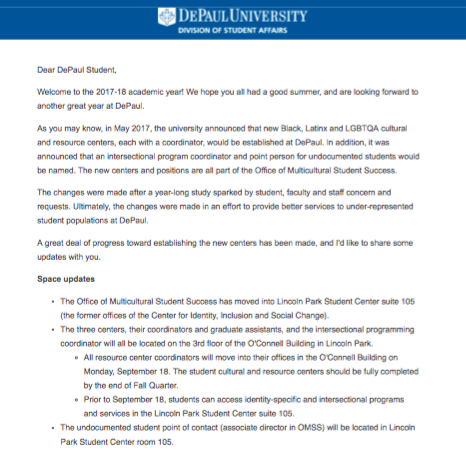
A copy of the university-wide email sent on Sept. 13 from the new center.
Sloan came to the panel with a question concerning the different diversity functions of OMSS and The Center.
“OMSS and The Center had different focuses in the ways they supported marginalized students, and having worked in The Center for a long time there was a huge focus on meeting students not just in their administrative needs, but also thinking about the campus as a social environment where students experience discrimination from peers and need spaces to recover from that,” Sloan said. “So are we trying to maintain that focus on providing for students that is responsive to the social environment that marginalized students experience here, and not just a way that’s responsive to administrative needs at DePaul?”
Everett said she could take that question, and explained how having those different responsibilities under one umbrella would streamline the process, and allow the two groups to meet on a weekly basis and interact on a daily basis. “It gives them an opportunity to streamline the process and understand how both sides of that impact the student experience,” Everett said.
Students not previously involved with The Center still wonder about how the rollout process is going. Garcia, who also attended the first Sustained Dialogues, said she’s been frustrated by the lack of updates for those not associated with OMSS or the old center, such as herself.
“I relied on other departments this quarter to find resources and spaces to bring up things we should be talking about, and they don’t know how to provide resources for students of color on campus,” Garcia said. “What are they [administration] doing to ensure that other professionals on campus are also making sure that students of color on campus are getting that support, and it’s not just all falling on OMSS?”
Garcia broke the ice that evening to ask a question in regards to sustainability of the centers. She brought up that the university has experienced recent budget cuts and a drop in overall enrollment, and as a result is worried about how the funding for these centers will play out long-term.
Eugene Zdziarski, Vice president of Student Affairs, responded that nearly every university is dealing with a drop in enrollment and that part of their planning process has been to make sure the model is sustainable. There are plans to evaluate the structure in 2020.
Administration panelists continued to respond to student questions for just over an hour. While some students were curious, some were more critical of university decisions. Jones, having previously worked on programming in The Center, was also trained in the spring to be a SoJA for the current fall term. About a month before classes began this year, SoJA employees were notified the position would no longer exist in the new centers, and were offered jobs as either STARS peer mentors or front desk assistants in the new structure. Jones felt a month before starting a new job is too late to eliminate the position, and expressed these concerns to administration at the event as well as in an interview.
“I think that if you’re gonna come to a school that touts these Vincentian values, and you’re trying to be a part of that mission, then it’s a big deal to make sure your community is being taken care of,” Jones said. “Right now, the marginalized students at this school are not being taken care of. They’re being forgotten about. And something that they worked really hard to build is gone, and nothing has been there to replace it.”
Jones declined the offer to work in the new centers at the time, knowing that the construction for the centers was moving along slowly and she would need a more stable and steady job for the coming quarter. She now works in the library, and later on accepted the front desk position for the new cultural centers once it begins in full this winter.
Panelists responded to Jones’ and other student concerns over their employment status, opening a direct dialogue over the issue.
“I know it doesn’t add money to your accounts, but I apologize,” Michael Riley, LGBTQA Resource Center Coordinator, said. “I wish I could expedite the process, I’m not gonna pretend it’s something that hasn’t affected you all negatively.”
Everett added that, “What you’re sayin’ is real Breya, we get that. We recognize that it is inadequate, and we’re working with what we have.”
For the most part, students say they don’t blame Riley and LaSalle, previous pro-staff in The Center, for the hand they’ve all been dealt, and appreciate the two working to update them as much as possible.
While different groups want different things, it can seem impossible for a university of 22,769 students to be satisfied on one solution. Kendall Sprinkle, president of DePaul’s Black Student Union (BSU) that initially requested the creation of a Black Cultural Center at DePaul, is more understanding of moving the grand opening from fall to winter. Sprinkle has been working to ensure the usability of these centers since spring of last year, and wants them to live up to student needs.
While looking forward to having a specific space for Black students to find resources and community, Sprinkle said this process isn’t quite what the group imagined. When The Center closed, BSU lost an advisor, Marquece Holifield, as she was also an employee of The Center.
In a new quarter with a new advisor, Antonio Porter from the College of Education, Sprinkle said BSU has focused their energy on keeping lines of communication open and honest, and having “frank conversations with administration on when and how things will get done.”
Outside of McGowan South room 108, a group of students gathered to chat about how part two of Sustained Dialogues went, and continue to air out their thoughts. Riley and LaSalle, the only previous pro-staff of The Center hired in the new structure, walked by on their way out and exchanged goodbyes with the students, lamenting that it had been too long since they’d seen each other, like old friends with a lot on their plate.
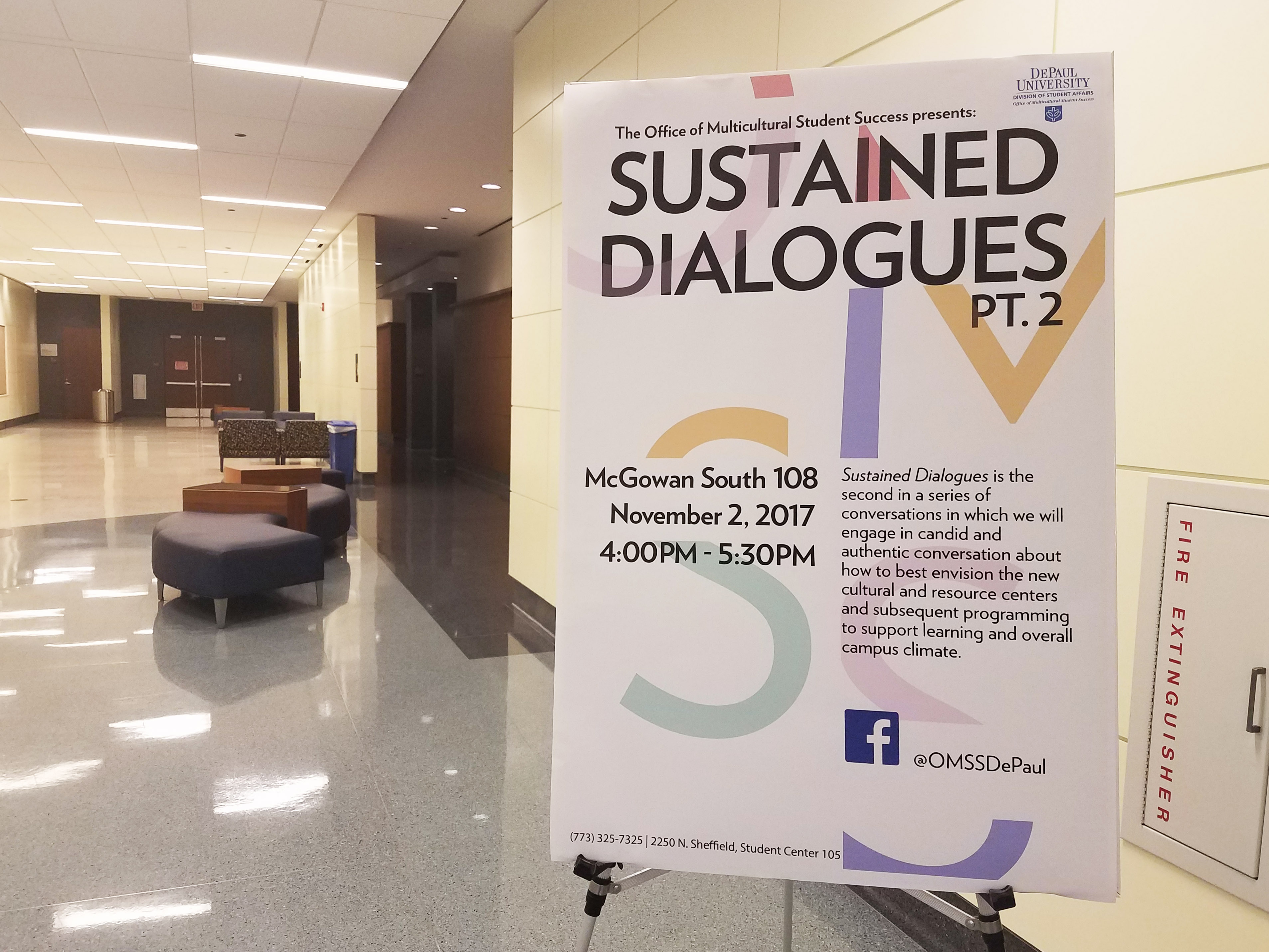
(Megan Stringer, 14 East)
As planning and construction of the cultural centers continues approximately six months after their announcement, there still remain students who continue to dedicate their energy toward not only dialogue, but action.
“The way this played out was not at all our intention or our expectation, or the information we initially received,” Sprinkle said. “But they [administration] are willing to work with the new centers to make sure that the ball isn’t not dropped in respect to what The Center used to provide for students. It’s not a favorable situation in terms of having a whole department close and losing people who helped shape your college career, but it’s the hand we’ve been dealt, so how we move forward from here is very important.”
The university plans to host another Sustained Dialogues event sometime during the week of Jan. 29, about a month after the opening of the new cultural centers.
Related Stories:
One Year Later: What I Learned From Reporting on the “Front and Center” Series
One Year Later, Students Weigh In On New Cultural and Resource Centers
Header photo by Megan Stringer


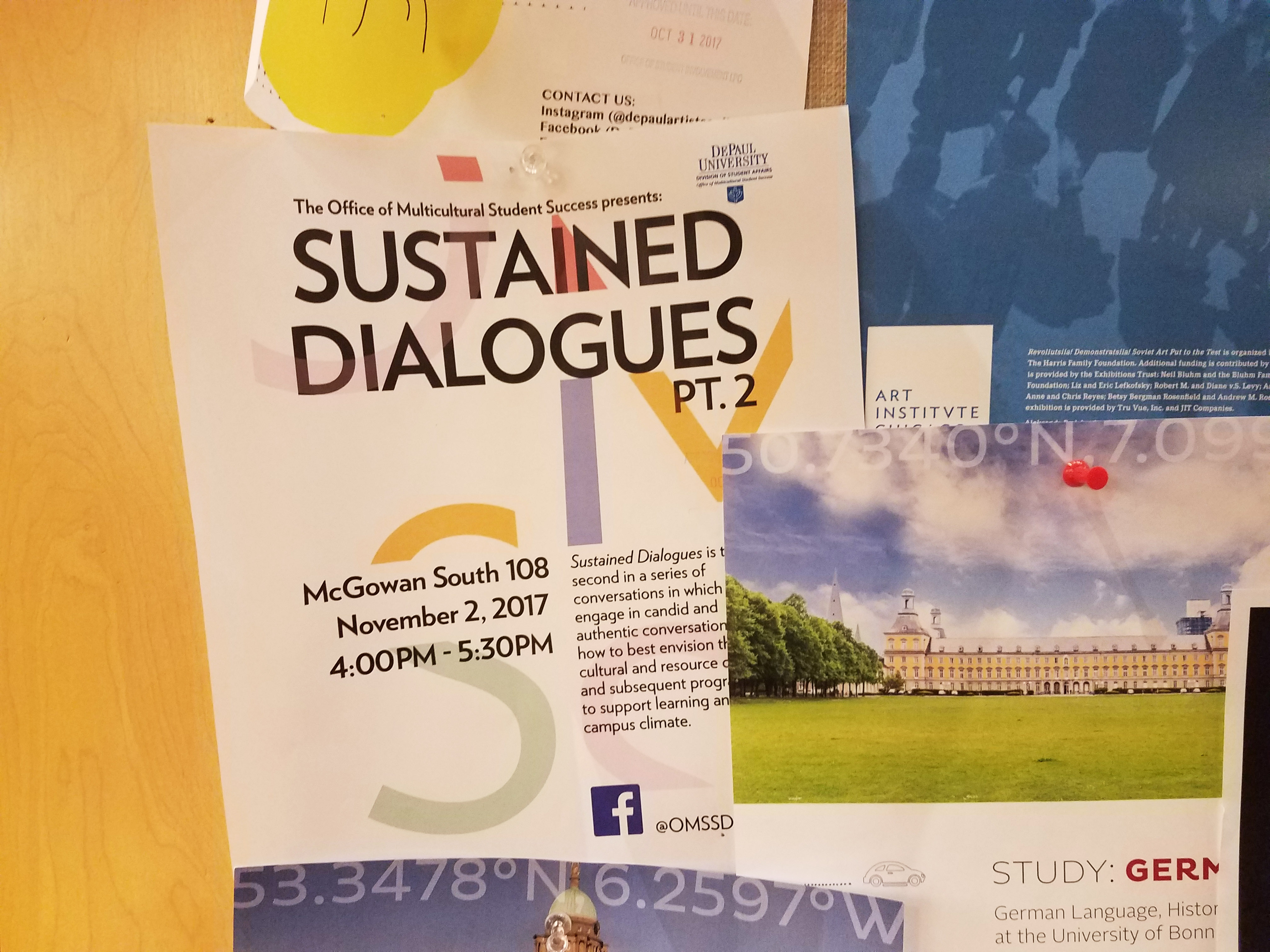
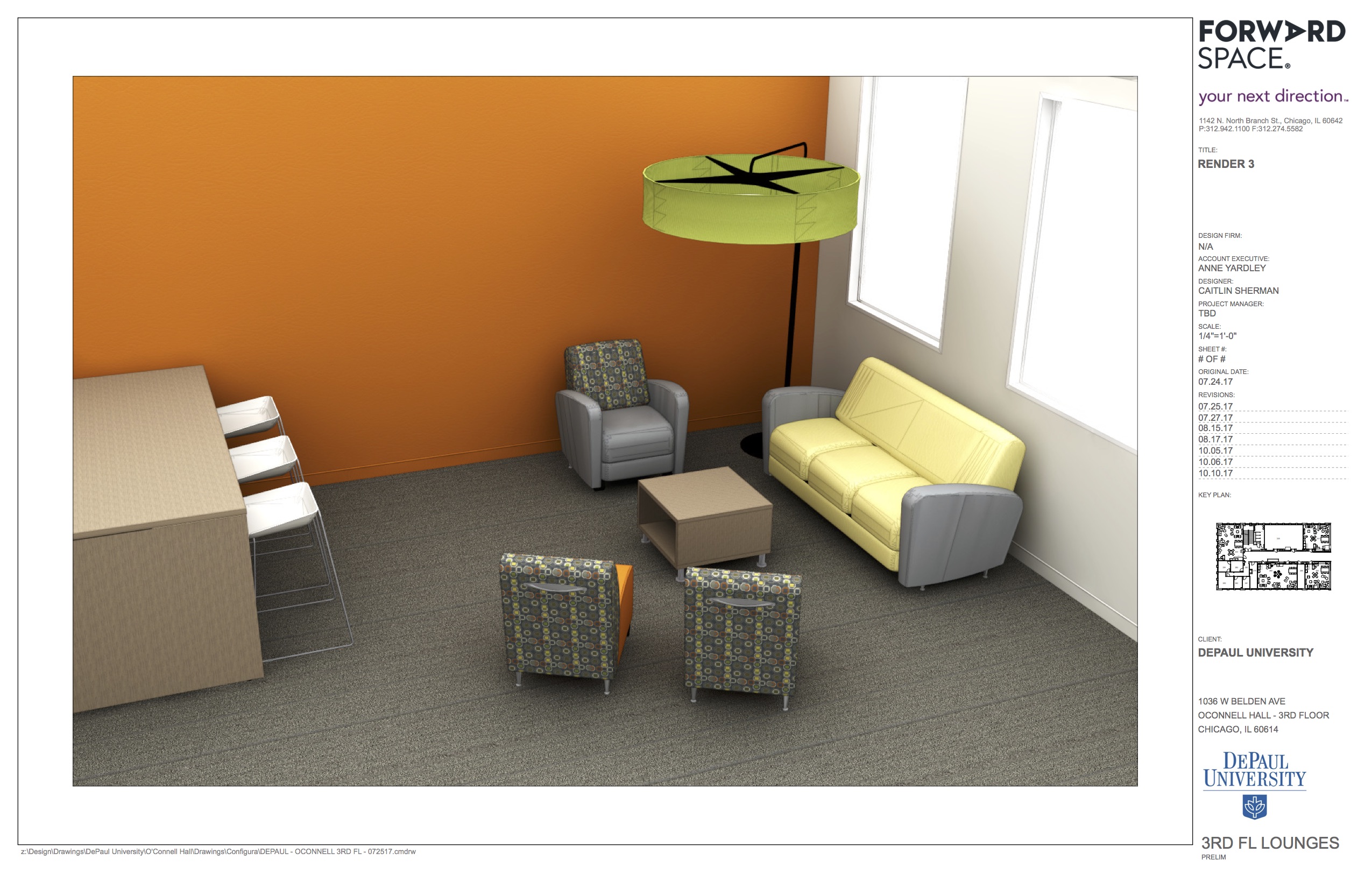
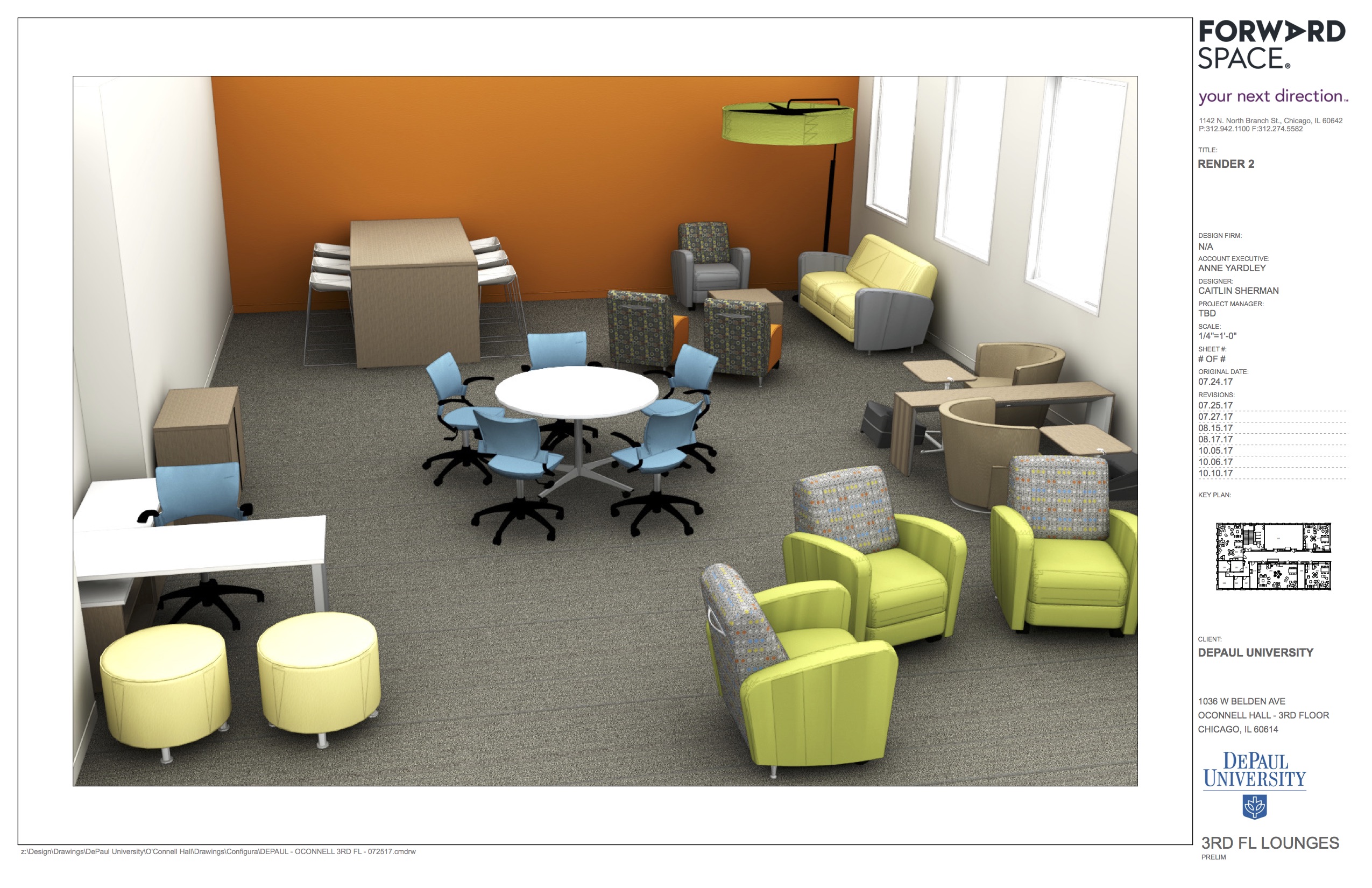
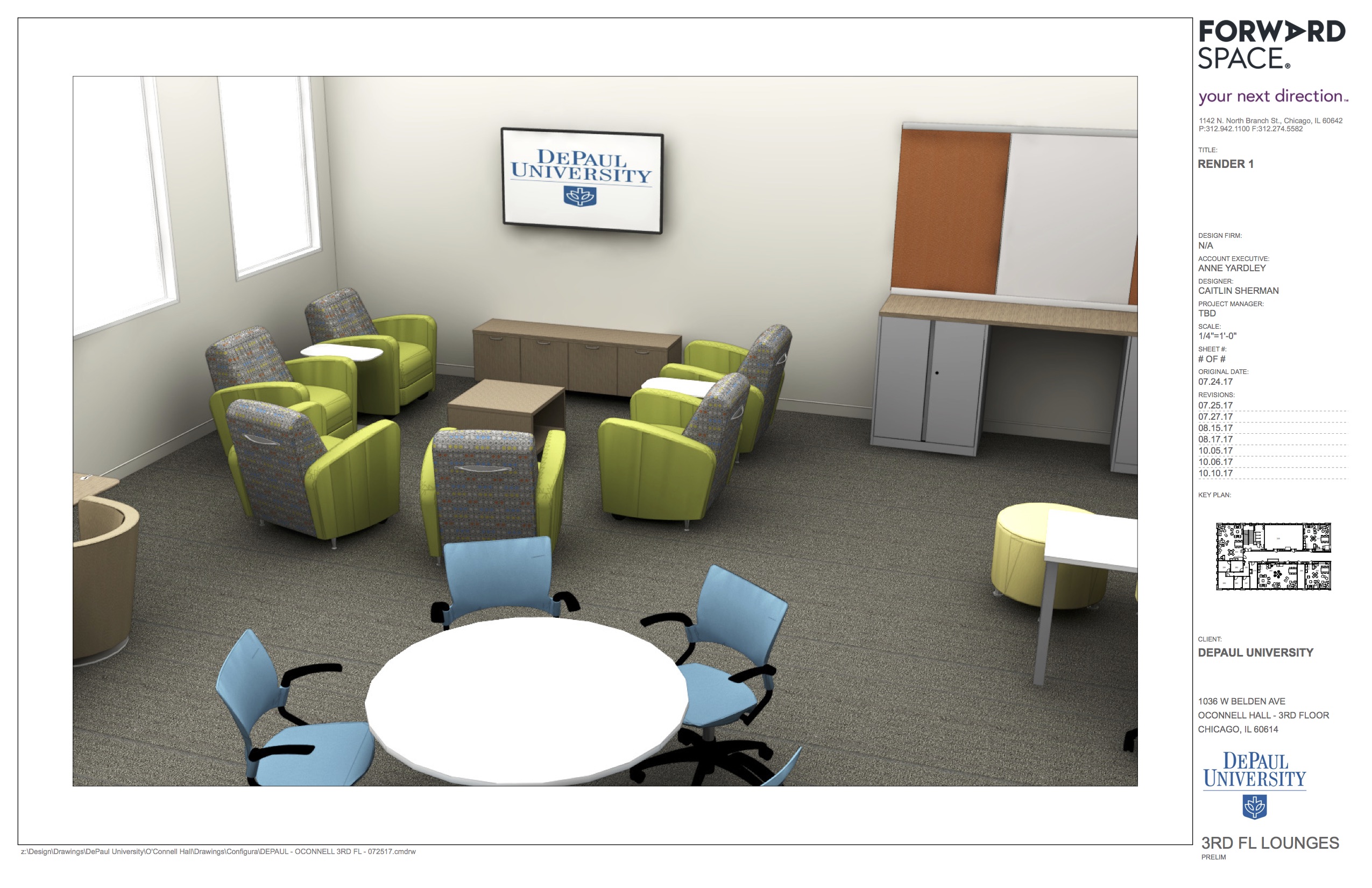

NO COMMENT